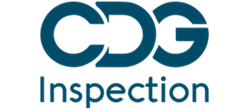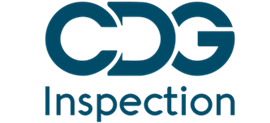Introduction:
CDG Inspection Limited is a pharmaceutical company dedicated to manufacturing high-quality medications and ensuring their safety and efficacy for consumers worldwide. Obtaining WHO GMP certification is a crucial step for pharmaceutical companies like CDG Inspection Limited, as it signifies adherence to international quality standards and regulatory requirements. This certification is not only essential for the company’s reputation but also for gaining access to global markets and ensuring the safety of patients.
However, the process of obtaining WHO GMP certification is riddled with challenges that can be both complex and time-consuming. In this article, we will explore these challenges in detail and provide strategies and solutions to address them effectively.
Common Challenges in Obtaining WHO GMP Certification
Regulatory Compliance: One of the foremost challenges for CDG Inspection Limited is ensuring compliance with the ever-evolving regulatory landscape. Regulatory requirements may vary from one country to another, and even minor discrepancies can lead to certification delays or rejections.
Solution: CDG Inspection Limited must maintain a dedicated team responsible for continuous monitoring of regulatory updates. Regularly updating processes and documentation to align with current regulations is essential. Additionally, fostering strong relationships with regulatory authorities can help navigate the compliance landscape effectively.
Quality Management System (QMS) Implementation: Establishing an effective QMS is a prerequisite for WHO GMP certification. Developing, implementing, and maintaining such a system can be resource-intensive and time-consuming.
Solution: CDG Inspection Limited should invest in QMS software and enlist the help of experts in the field to ensure that their QMS is robust and meets WHO GMP standards. Regular audits and assessments should be conducted to identify and rectify any weaknesses in the system.
Infrastructure and Facility Compliance: Ensuring that manufacturing facilities meet WHO GMP standards is a significant challenge. This includes issues related to infrastructure, cleanliness, sanitation, and adherence to specific guidelines regarding facility design.
Solution: Regular facility assessments should be conducted to identify areas that require improvement. Investing in facility upgrades, staff training on sanitation practices, and implementing a preventive maintenance program can help address these challenges effectively.
Documentation and Record-Keeping: Maintaining accurate and up-to-date documentation is crucial for compliance. Errors or omissions in documentation can lead to certification delays.
Solution: CDG Inspection Limited should establish a robust document control system and ensure that all employees are trained in proper documentation practices. Regular document reviews and audits can help identify and rectify any issues.
Qualified Personnel: Having a competent and well-trained workforce is essential for meeting WHO GMP requirements. Ensuring that employees have the necessary qualifications, training, and experience can be challenging.
Solution: CDG Inspection Limited should invest in training programs for employees and maintain a comprehensive training record. Regularly assess and update the skills and qualifications of the workforce to meet evolving requirements.
Supply Chain Management: Managing the pharmaceutical supply chain to meet WHO GMP standards is a complex task. Ensuring the quality and integrity of raw materials, packaging materials, and finished products throughout the supply chain is crucial.
Solution: CDG Inspection Limited should establish strong supplier quality management processes, including supplier audits and qualification. Implementing robust tracking and monitoring systems for the supply chain can help maintain product integrity.
Data Integrity and Security: Ensuring the integrity and security of data related to manufacturing processes, quality control, and product testing is vital for WHO GMP certification.
Solution: Implement data integrity policies and security measures, including access controls and regular data audits. Investing in advanced data management systems can enhance data integrity and security.
Validation and Qualification: Validating processes and equipment and qualifying facilities is a critical aspect of WHO GMP compliance.
Solution: CDG Inspection Limited should establish a comprehensive validation and qualification program, including protocols, testing, and documentation. Regularly review and update validation and qualification procedures to meet evolving standards.
Change Control and Risk Management: Managing changes in processes, equipment, or materials while ensuring minimal risk to product quality and patient safety can be challenging.
Solution: Develop a robust change control process that includes risk assessments and impact analyses. Ensure that all changes are thoroughly documented and reviewed before implementation.
Audit Preparedness: Being prepared for WHO GMP audits, whether from regulatory authorities or external auditors, is crucial. Lack of preparedness can result in certification delays or non-compliance findings.
Solution: Conduct regular internal audits to identify and rectify compliance gaps. Engage external consultants or auditors to provide objective assessments and prepare for official audits.
Conclusion:
Obtaining WHO GMP certification is a vital achievement for CDG Inspection Limited and other pharmaceutical companies committed to producing safe and high-quality medications. While the challenges in this journey are numerous and complex, they can be effectively addressed with careful planning, investment in resources and technology, and a strong commitment to continuous improvement and compliance. By navigating these challenges successfully, CDG Inspection Limited can not only achieve WHO GMP certification but also maintain a reputation for excellence in pharmaceutical manufacturing.






Your point of view caught my eye and was very interesting. Thanks. I have a question for you. https://www.binance.com/join?ref=P9L9FQKY